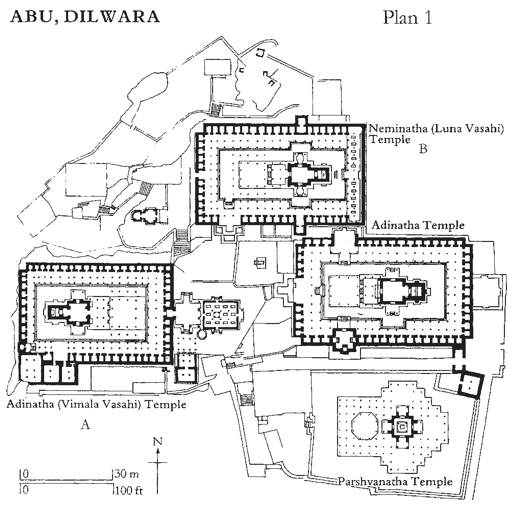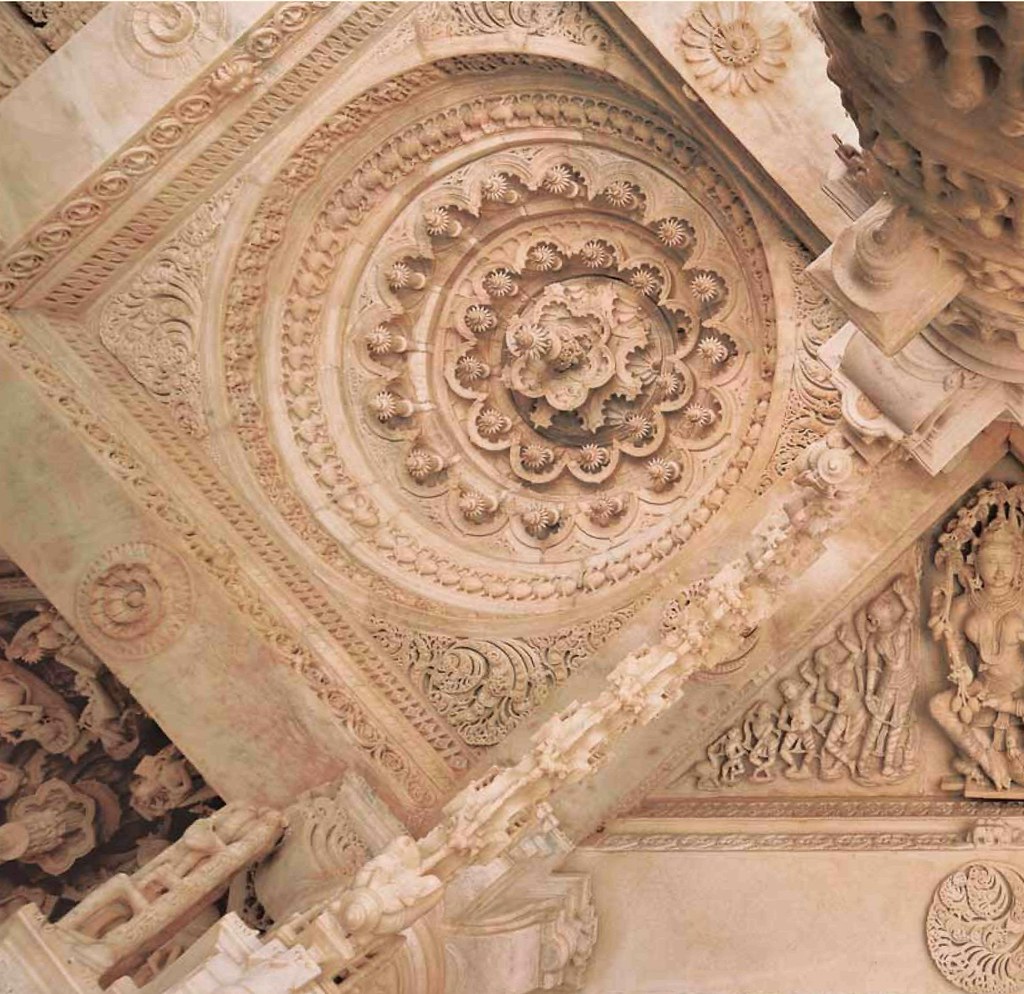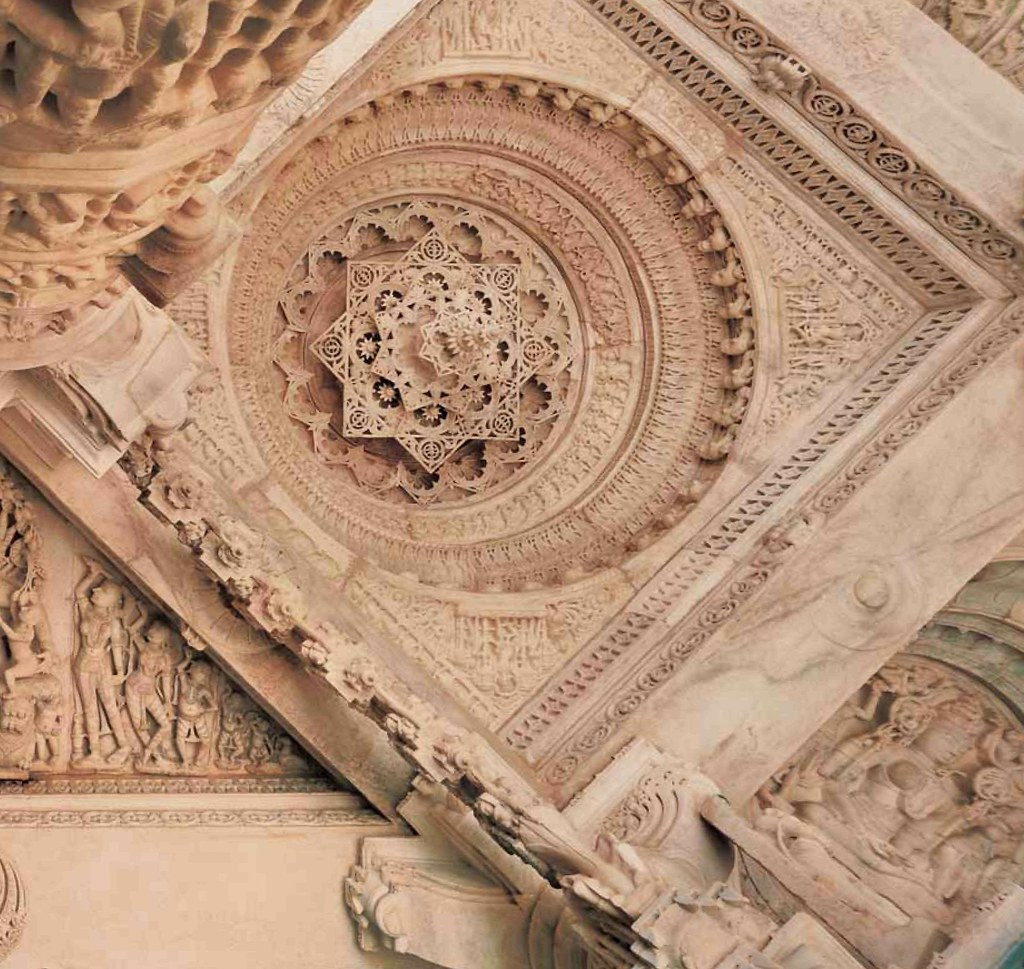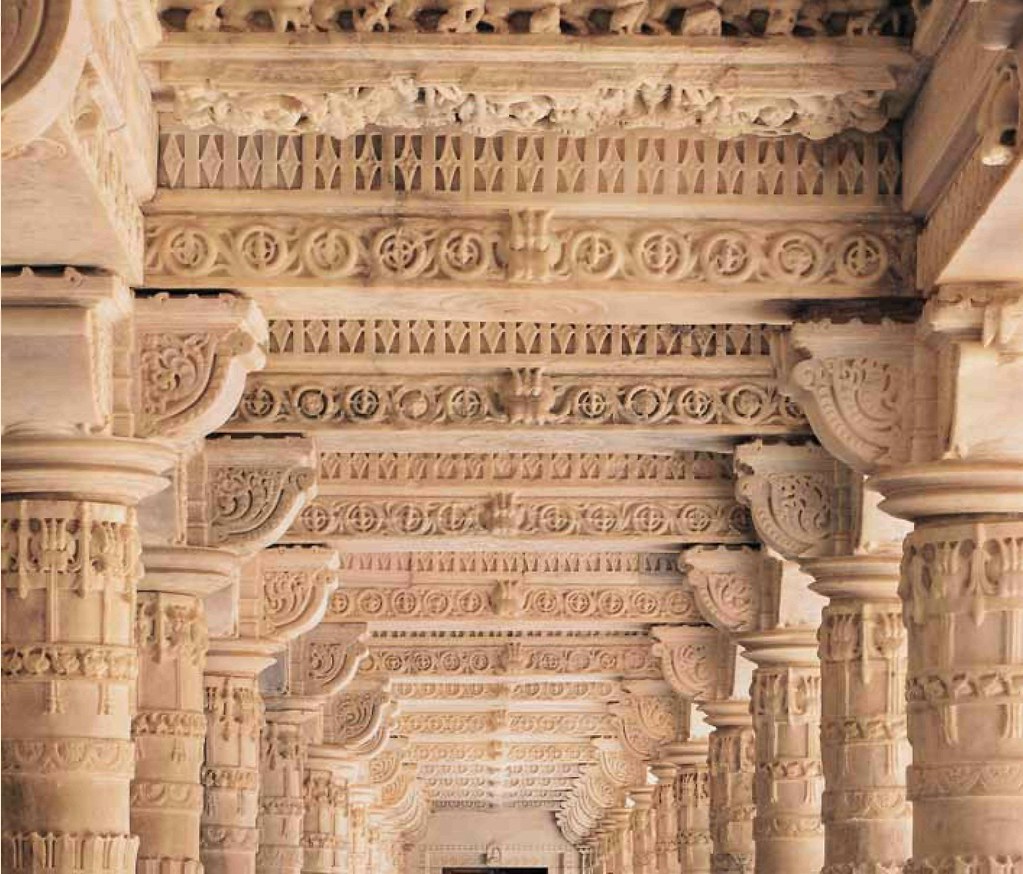The Jain Temples Of Dilwara
Overall plan of the temples
The Jain temples of Dilwara are located a few kilometres away from the city in a valley; they are barely visible from a distance since their domes and little pyramids hardly protrude above the boundary wall. Only two of the four temples forming the complex shall be dealt with here. Namely the Vimala Vasahi Temple (marked A in the overall plan) and the Luna Vasahi Temple (marked B in the overall plan).
 Partial view of the ranga-mandapa ceiling in Luna Vasahi / Tejapala (left)
Partial view of the ranga-mandapa ceiling in Luna Vasahi / Tejapala (left) Partial view of the ranga-mandapa ceiling in Luna Vasahi / Tejapala (right)
Partial view of the ranga-mandapa ceiling in Luna Vasahi / Tejapala (right)The social motivation for constructing temples in medieval times, the 9th and 15th centuries saw building of the majority of important Jain temples. This period forms the golden age of temple construction all over India. There is an Indian belief, from times immemorial, in the merit of erecting, repairing or restoring a temple. The ruler was expected to undertake this as a religious and special task. In the value of patriarchal duty, a king expected to take care of the religious needs of all his flock comprising different religious groups, irrespective of his own religion. Particularly during the middle ages, the intense religious favour of the kings encouraged their ministers, even rich merchants, to act as patrons and donors. The growing affluence of large sections of the population led to a ‘democratisation’ of temple donations to a degree never before witnessed.
 Partial view of the southern ambulatory in Vimala Vasahi Temple
Partial view of the southern ambulatory in Vimala Vasahi TempleThe Jains, who by virtue of their religion, debarred from practising certain professions, came into their own as merchants, jewellers or bankers and amassed great wealth. This provided them with political possibilities as well: several of them were appointed as ministers by their kings. In these positions of power they naturally had to compromise on certain tenets of their religion such as non- violence or the non-killing of living beings. In these circumstances, they often used their fabulous wealth for the purpose of religious endowments either as atonement for their sins or for improving their karma.
All the temples discussed here share the same social background and religious philosophy but these form merely the tip of the iceberg since around half the shrines in the states of modern Rajasthan and Gujarat were constructed by Jains in the middle ages.
 Partial view of the southern ambulatory in Vimala Vasahi Temple
Partial view of the southern ambulatory in Vimala Vasahi TempleSeveral of these made from white marble, because either the material was expensive or because of the Symbolism associated with the translucence of the stone. Another reason could be that marble is ideal material for inlay work, reminiscent of jewels or of expensive ivory reliquaries. The negation of worldliness by Jainism moved several donors in old age to turn their back on an active life and to take monks’ vows. Thus, these shrines, which number among the most beautiful in Asia, paradoxically bear testimony to a religion, which, like no other, upholds the ideal of renunciation and of withdrawal from the world.
